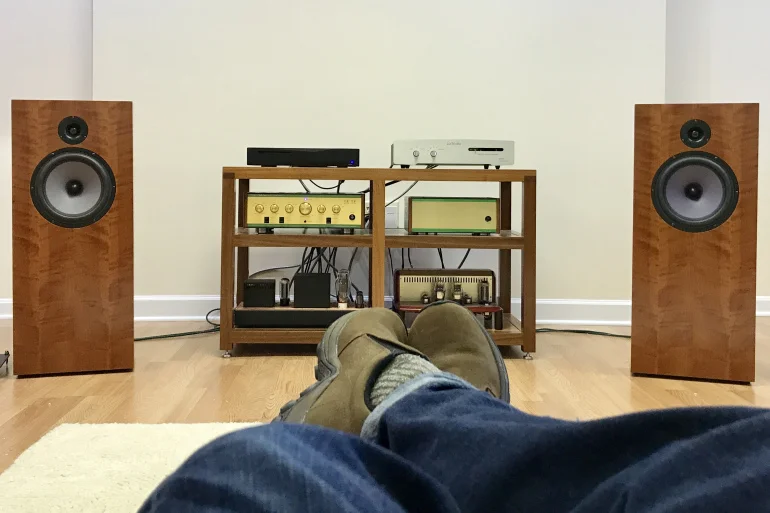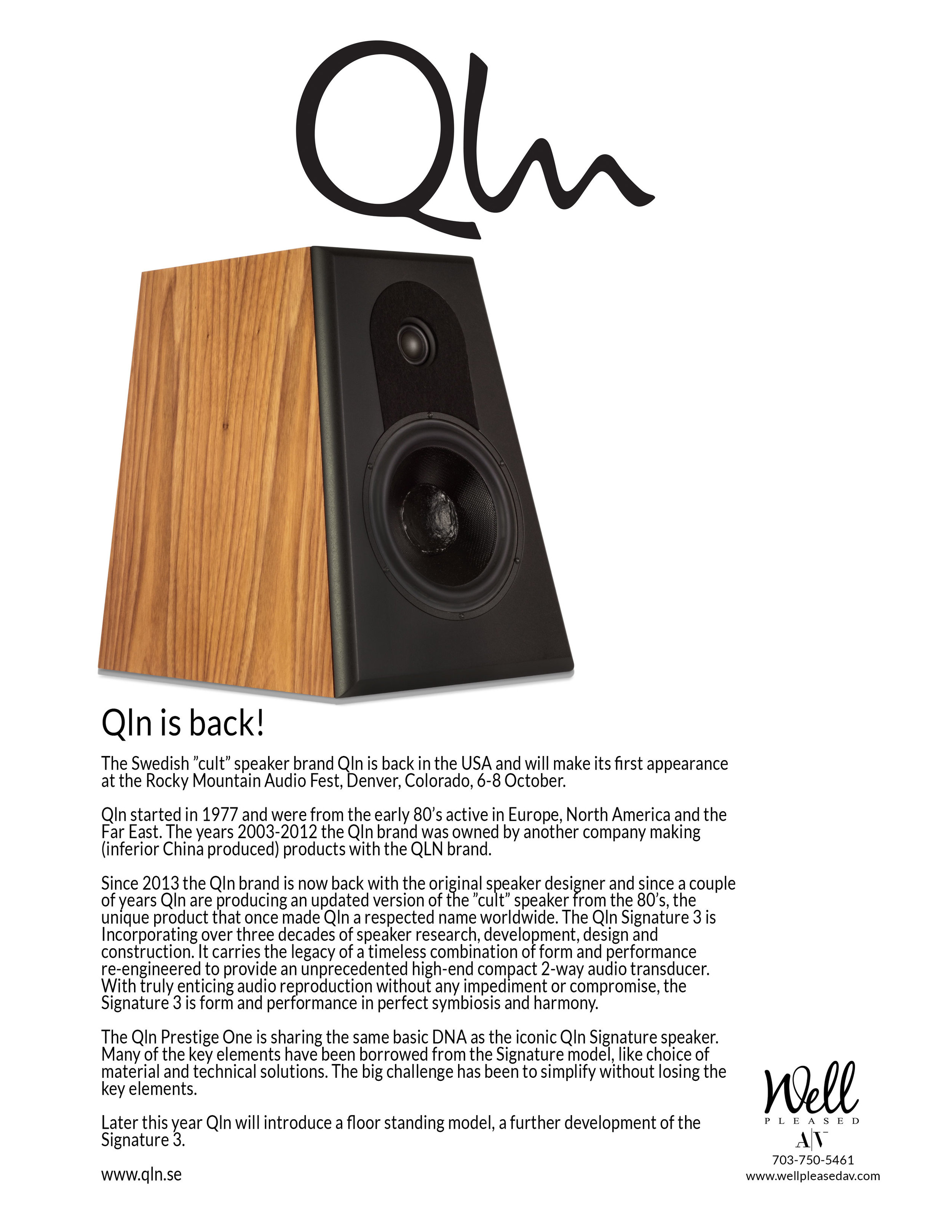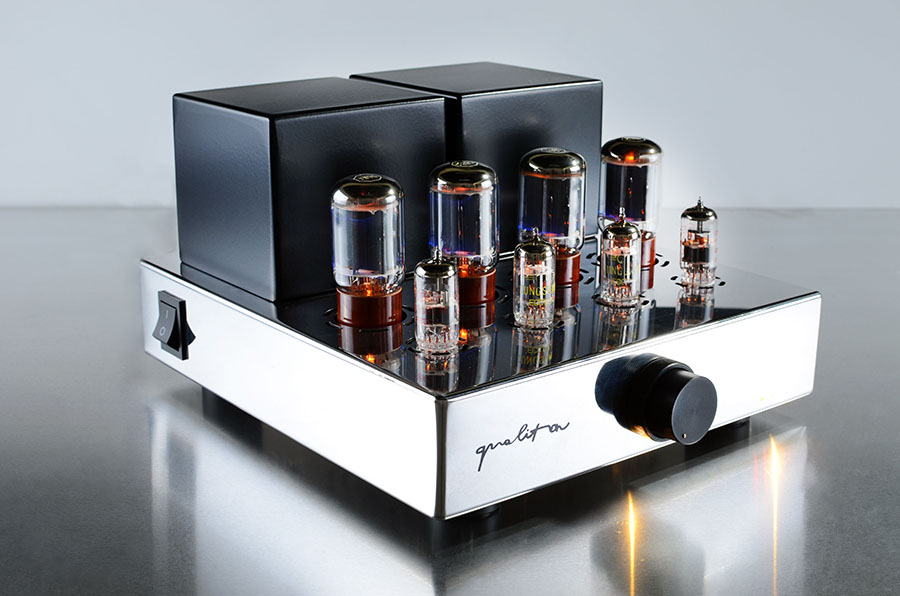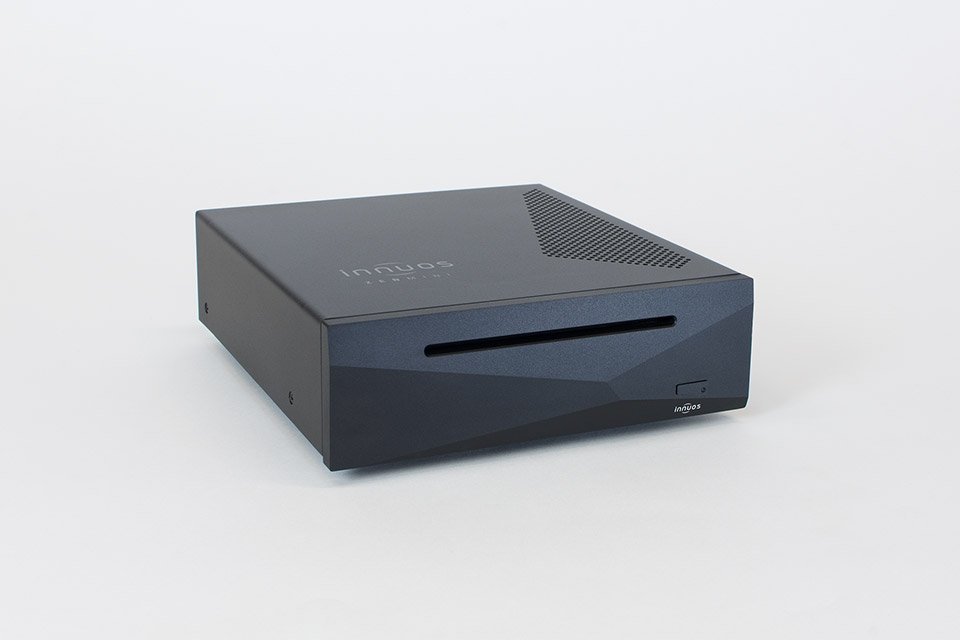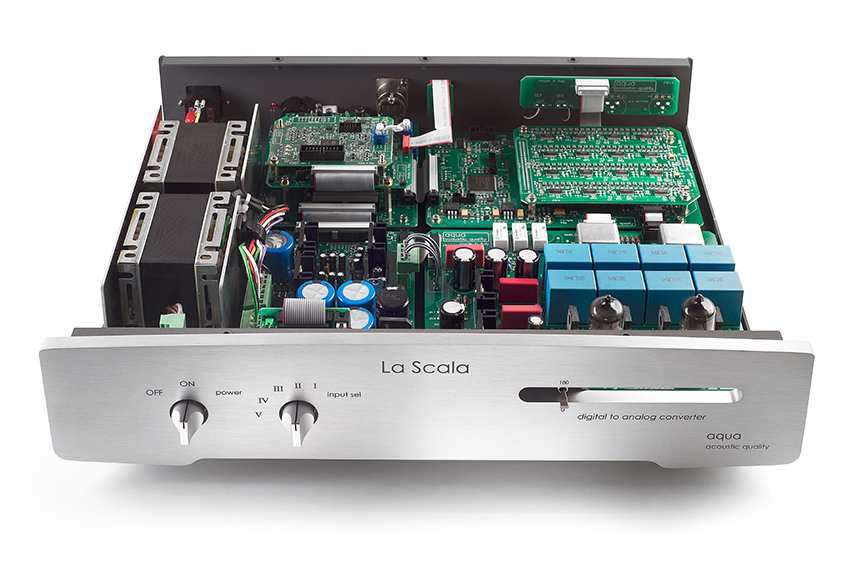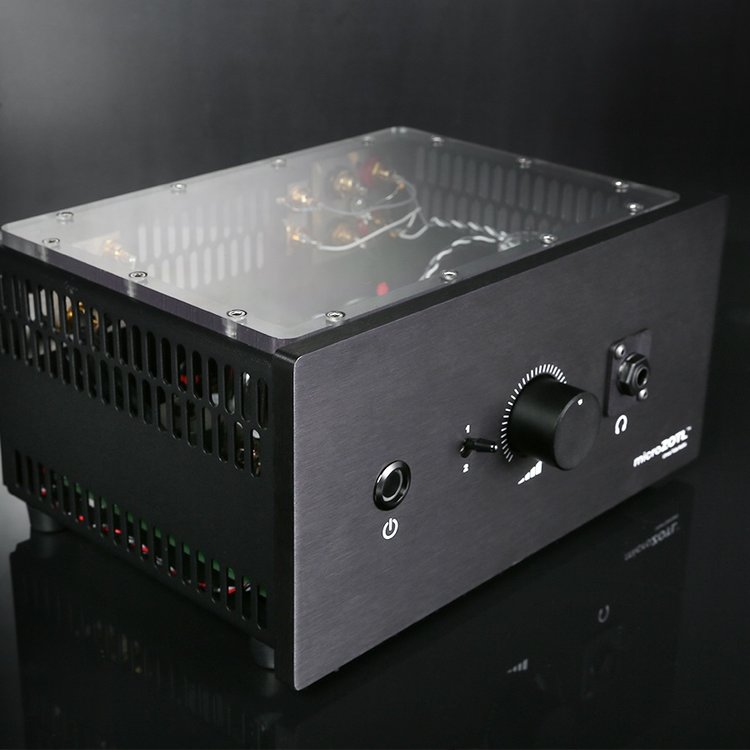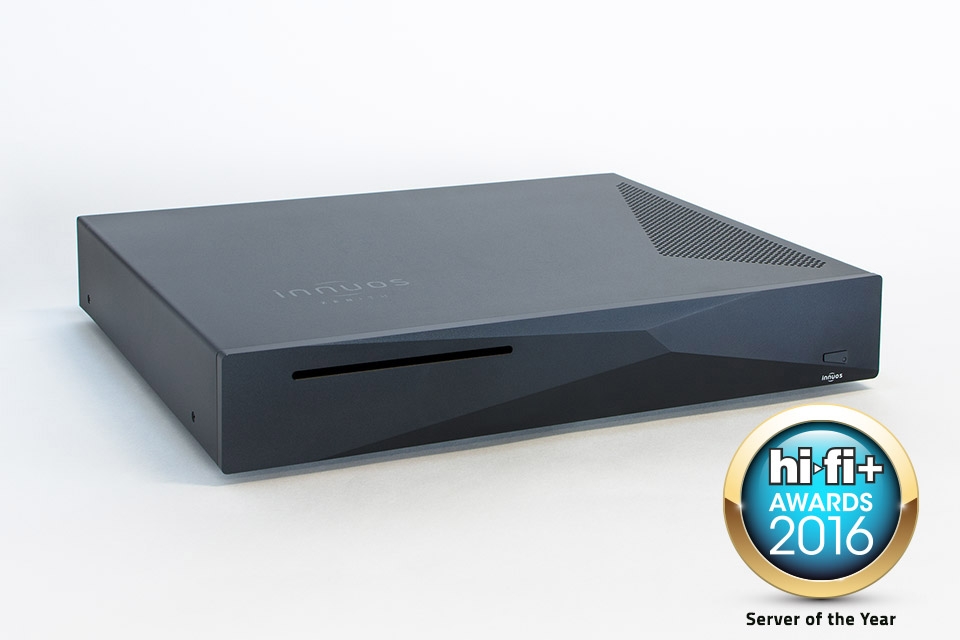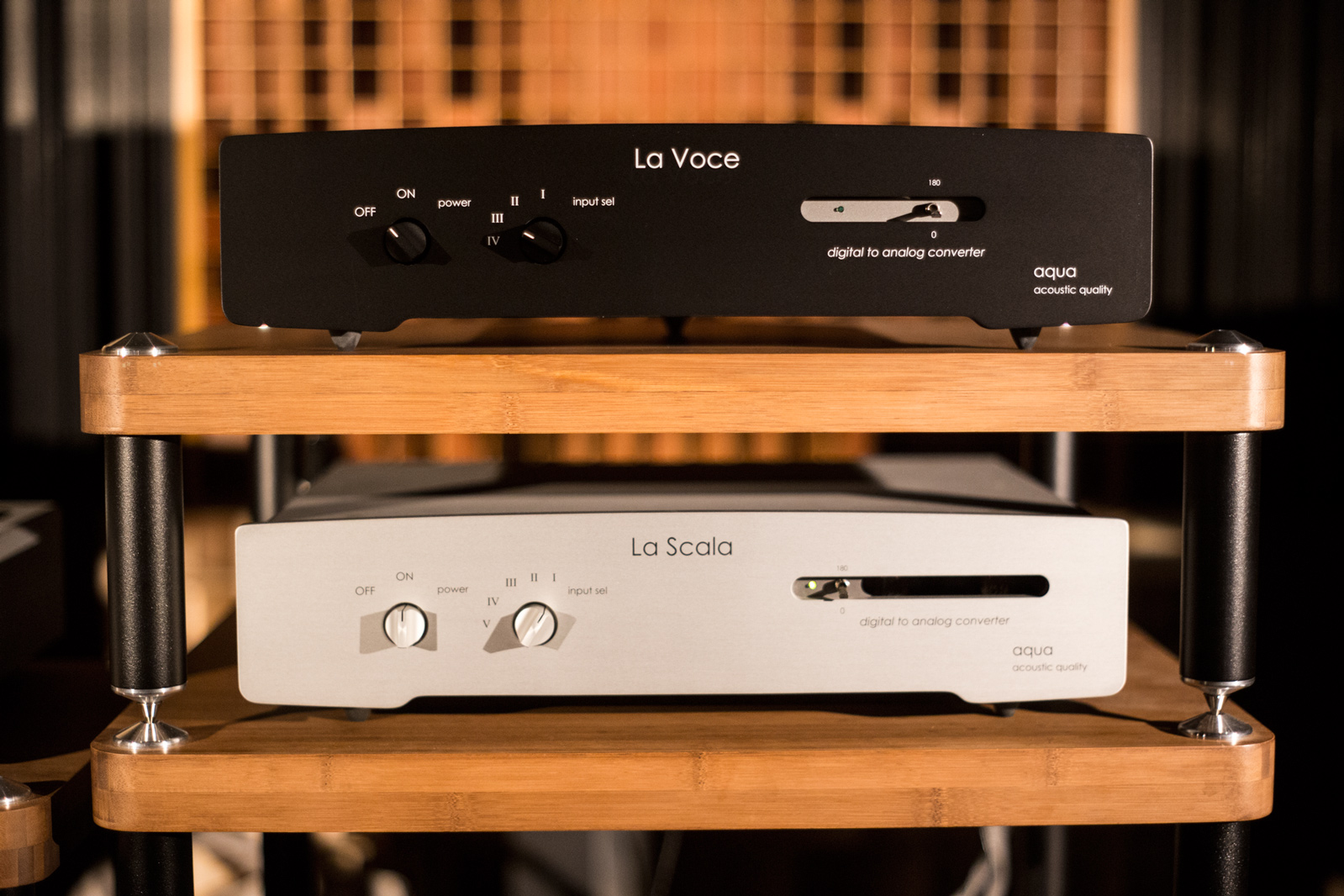Qln speakers and I go way back; I owned a pair in the early eighties, but my pair procceeded the Classic Signature model. I purchased mine from Mike Shotts’ Soundtracks audio store in Auburn, AL, probably back in the day when Bo Jackson was still running up and down Jordan-Hare field at Auburn if this gives any of you college football fans a pretty good reference on time. The picture above shows the Qln Signature models from the Classic Signature through the current model, the Signature 3.They were black truncated pyramids with a very stunning midrange. So when Mark Sossa of Well Pleased Audio Vida sent me the wonderful Qualiton A20I to review, and when I went to his website, I was very surprised to see that he also imported Qln Loudspeakers from Sweeden. Then at RMAF, I got to hear the new Qln Signature 3 and immediately asked for a pair for review.
Just a little more history to tie these speakers to the company’s great past. Qln started in 1977 with an idea about how a loudspeaker should be designed to best reproduce the soundstage and music. This fundamental ambition has been there in every iteration of these speakers over time. In the early 80’s, they were available in Europe, North America, and the Far East, however, there were some years when their availability in North America was rather spotty.
Starting in 2003 through 2012, the Qln brand was owned by another company making products under the brand. In 2013, the original owner bought back the Qln brand, and Qln is now back and is making an all-out effort to continue to make the unique products they have been known for over the years. Qln likes to say, “We want you to listen to music, not to loudspeakers.” This is a goal that I agree with completely.
Design
The present designer’s approach seeks to refine the Qln Signature platform that was already an elegant performer. Their design goals were to further reduce distortion, increase presence, timing, timbre, level of detail and micro/macro dynamics, regardless of level, scale and complexity of program material. This is a worthy, and I would even say lofty goal for a small, two-way speaker.
The cabinet itself is a big part of any speaker design, but back in 1980, the Qln cabinet work was quite innovative. The new Signature 3 uses a slanted solid 28 mm baffle that provides close to perfect time alignment between the woofer and tweeter. The cabinet’s rounded edges help avoid baffle diffraction while the slanted cabinet suppresses any standing waves inside the cabinet. In 1989, Qln developed a unique Qboard® product of superior damping sandwich technology to come as close as possible to eliminating structural resonances. A whitepaper on Qboard® technology is available online here.
On the new Signature 3, Qln has completely redesigned their crossovers. They are hardwired with high-end, oil-filled capacitors and baked coils to avoid any internal component resonances. Another goal was that the crossover would have perfect timing throughout the entire frequency range.
The bass/midrange and treble drivers have been custom developed by Danish driver manufacturer, Scan Speak, for Qln. The Signature 3 offers the latest in 21st-century driver technology compared to the Signature 1 and 2 speakers. The bass and midrange are played by a coated Kevlar driver with a built-in copper ring in the magnet system. The goal is to offer a more symmetric drive and higher dynamics in the midrange while concurrently suppressing intermodulation distortion. They call their tweeter an Illuminator tweeter. The tweeter’s large roll surround and textile dome diaphragm is said to provide a flat frequency response above 30 kHz with outstanding off-axis dispersion. It uses what they call an AirCirc magnet system.
The internal cabling is Qln’s own special design that uses a 12-pcs solid core, pure copper wire design with polypropylene isolation produced in Sweden. They use non-metal terminal plates and pole screws to avoid induced currents. Speaker terminals are made of pure massive copper coupled with easy to use grip-friendly screws.
Set Up
When I get a speaker in for review, there are two responsibilities I am very aware of. I need to be sure that they are set up correctly and that they are matched to an amplifier that lets me hear the best from the speaker, but more on this second point below. I am sharing the picture from RMAF here to point out some important things about setting these speakers up. First, notice the speaker stands. These speakers need really good stands that are sand-filled, or even better, filled with a mixture of sand and lead shot. They produce too much bass to sit just any metal or wood stand as they literally need to be held still by the stand.
Next, notice the placement. No, they don’t have to be quite that far from the wall behind them as in the picture, but they do need lots of room to breathe. It is important to get them away from the walls, get the toe-in correct, and, this is important, do not put a tall rack or a television between them. You don’t need to be afraid to pull them way out from the walls. I know with speakers this size you might be worried about the bass if you pull them out like this, but don’t worry. They have plenty of bass, and by the way, really good bass. Placed correctly, the Signature 3s produce a sound that will make you look around the room for the subwoofer, and for that matter, where the speakers themselves are located. To do this, however, they need plenty of uncluttered space around and behind them.
Which Amplifier?
I used the Signature 3s with several amps, the Electrocompaniet PI 2D integrated amplifier that outputs 100 watts per channel into eight ohms, the Pass Labs XA25 and the Pass Labs XA 30.8. I also hope to do a part II of this review where I use it with the Digital Amplifier Company’s MEGAschino at 1000 watts per channel into four ohms and the wonderful Qualiton A 50i I heard with the Signature 3s at RMAF at 50 watts per channel.
Of the three amps I had on hand when writing this review the Electrocompaniet integrated specs out with the most power, but the Pass Labs XA30.8 sounded the most powerful. Don’t get me wrong, the Signature 3s with the Electrocompaniet PI 2D sounded great together. The Pass Labs XA 25 sounded good, but I felt it and the Signature 3s were cut very much from the same sonic cloth and ended up being a little too much of a good thing.
Just like in the story of the “Three Bears,” the Pass Labs XA 30.8 was “just right.” It had plenty of power and took control of the bass in a way that made the bass sound better than it does with most floor standers. The midrange was alive, and the system had a great sense of aliveness. So, for this part I of the review, I used the Pass Labs XA 30.8.
Reference System
My reference system consists of a pair of Teresonic Ingenium XR-Silver speakers driven in this case by the Pass Labs XA30.8 pure class A stereo amp. The linestage duties are carried out by an Emia Remote Autoformer. The source is my AMG Viella V12 turntable and the AMG 12-inch Turbo-Tonearm. I used the DS Audio Master1 Optical Cartridge. All the cabling was Duelund except for the tonearm cable and power cables which are the Audience Au24SX. Everything is plugged into an HB Cable Design PowerSlave Marble power distributor.
Listening
The overall sound of the Qln loudspeakers is quite remarkable. Their ability to produce a “reach-out-and-touch-someone” soundstage was one of the best I’ve ever heard in my house and that includes some mini monitors that cost well over $20,000. Their inner detail and imaging were also in the same class as speakers that cost six figures. They had dynamics, scale and slam that you would be thrilled with from any speaker of any size. Yet, they have a sound I seldom hear from stand-mounted speakers other than those from Audio Note. They have rich harmonics and beautiful timbre.
Well, let me get on with more details. The Signature 3s produced a very coherent midrange for any speaker with a crossover that I have heard. They are not the very last word in transparency, but they make up for the tiny bit they miss by focusing the listener on the performance instead of on the audio traits of the speaker. A speaker’s ability to resolve small amounts of information and keep them separated from each other and at the same time produce a coherent sound is one of the things that elevates good speakers to great speakers. The Signature 3s let you hear inner detail with an ease and grace that never shouts out “aren’t we detailed and transparent.” So often, speakers that are described as very detailed are really more etched-sounding than live music ever is. I’m glad to say that these speakers reproduced detail in a very natural and musical manner.
I always spend a good bit of time listening to male and female vocals as well as piano music when doing a review. Voices, both male and female, sounded beautifully natural, which is not so easy to do as many speakers that get the female voice right make the male voice sound thin. There wasn’t the least bit of a nasal tone or over emphasis of sibilance.
Pianos, like most instruments, benefit from the coherency of this speaker. When listening to piano music, it is easy to hear both the attack and the decay for an appropriate time. The extended top goes way out beyond my hearing, but it never sounds bright or etched. The Signature 3 is a speaker that gets the tones of music right, and that makes listening to them a very enjoyable experience.
The bottom octaves of music played on the Signature 3 speakers were simply wonderful to listen to if the speakers are positioned correctly in the room. Most people would say they are shocking for their size, and that could be true. Except, I didn’t find the bass shocking in any way. It was just musical, and I didn’t say wonderful for their size. That’s because their bass is wonderful for any speakers of any size.
I do admit that I have different taste about how much bass is needed for a lifelike, emotional musical experience, but I can’t imagine many music lovers who would feel the need for a subwoofer. If you do, I don’t think they would be hard to blend with something like a REL, but most people who visited me while I was listening to them asked where was the subwoofer. The Signature 3s hit a nice niche between the sound of speakers with rigid aluminum constructed cabinets that do not resonate at all and live cabinets like those of Audio Note or my Teresonic speakers. The speakers from top to bottom were fast and quick, but with a nice bloom. They do not sacrifice the bloom of the two octaves below middle C to achieve their tight bass. They allowed the bass transients in the lower range to have details seldom heard other than in live music. Their leading edge was just about a perfect balance with their decay. They let you hear the sticks or mallets as they struck drums as well as they let you easily discriminate the location of each drum but still hear the decay of the drums. Likewise, the finger work on a stand-up bass came across fast, taut and realistically deep.
The dynamics were exceptional for any speaker, not just for a small speaker. When listening to Muddy Waters sing the blues, I was very satisfied with the sound. This was in part due to the speakers’ dynamics and micro-dynamics. Adding to this, I have never heard his voice sound more articulate, and it had a very special sound. Another thing that made Waters sound so good was the Signature 3s’ scale. Now, they didn’t have the same kind of scale as the Teresonic Ingenium XRs, but that’s not because they don’t have scale as good as those speakers, it’s just different.
Soundstage
Those of you who read my writings regularly know that sound staging isn’t the most important thing to me, but that doesn’t mean I don’t enjoy a good one. When it comes to soundstage specifics, different audiophiles surely are looking for different things. For time’s sake, I’m going to divide them into three types. First, there is the huge and powerful type that if placed in a large enough room can produce a “they are in your room” soundstage. These speakers usually produce a soundstage that extends behind, in front and to the outside of the speakers. Type two are speakers, normally planers or Walsh types, that seem to have the music float up and out of them. They produce a very big, spacious and natural soundstage. The drawback with these is that sometimes they lack specificity. This type of soundstage often sounds whole and very coherent, though. With type 3, the speakers are capable of producing a soundstage that hangs in the air behind the speakers and to the outside of the speakers. These speakers seldom have sound that comes from in front of them. If this is done really well, it seems like nothing is even coming out of the speakers, and surely the sound is being produced by some unseen speakers behind them. In fact, non-audiophile visitors often ask where the speakers that are playing are located. This is the kind of soundstage that many audiophiles “go gaga” over. I understand why, but if it’s not done very carefully, this type of soundstage can be very distracting from the music. Done correctly though, this kind of soundstage is very captivating and very addictive.
It is this third type of soundstage that the Signature 3s produce, and they do it exceptionally well. I’ve spent a lot of time with some of the classic speakers with this kind of soundstage, and these speakers do a magical job of producing this soundstage with none of its weaknesses. The soundstage is huge and coherent; I wish all speakers had this ability.
Summing Up
I have only two caveats with the Signature 3s, the first is that they really need to be set up well out from all walls. This isn’t unusual with mini-monitors, but it will rule them out for some people. The second caveat is their price, $6,999 is a lot of money for a pair of speakers, so be sure you have room to set them up and equipment that is up to their caliber of performance. Having shared these two things, I still promise you these are exceptional and that while there is plenty of competition at this price point, I promise you the Qln Signature 3s are among the best. I look forward to sharing with you how they sound with a couple of other amps soon.
Specifications
Impedance: 8 ohms
Amplifier requirements: 25-250 Watt RMS
Sensitivity: 87 dB SPL 1 Watt 1m
Low frequency performance: -3dB 42Hz
Cabinet: Dual density Qboard®
Terminal: Single wire
Dimensions (HxWxD): 370x265x365
Weight: 12,5 kg each
Finish: Walnut, White satin, natural oiled Oak
Price: $6,999

